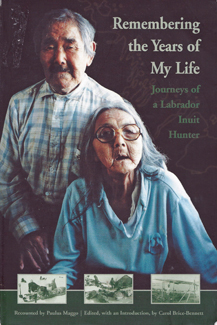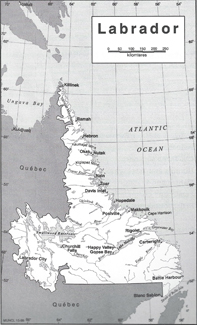From the Editor
Tumivut: Three Stories
Chinook Project’s Labrador 2012 Report
In the News
Media Review (book): Remembering the Years of My Life
Media Review (film): Labrador North
Akunnirmiut Nunavut Quest
Nunavut Quest Documentary Ready for Sale!
Good Reads
IMHO: Last Call
Index: Volume 14, The Fan Hitch
Navigating This Site
Index of articles by subject
Index of back issues by volume number
Search The Fan Hitch
Articles to download and print
Ordering Ken MacRury's Thesis
Our comprehensive list of resources
Defining the Inuit Dog
Talk to The Fan Hitch
The Fan Hitch home page
ISDI home page
Editor's/Publisher's Statement
Editor: Sue Hamilton
Webmaster: Mark Hamilton
The Fan Hitch, Journal of
the Inuit Sled Dog, is published four times
a year. It is available at no cost online
at: https://thefanhitch.org.
The Fan Hitch welcomes your letters, stories, comments and suggestions. The editorial staff reserves the right to edit submissions used for publication.
Contents of The Fan Hitch are protected by international copyright laws. No photo, drawing or text may be reproduced in any form without written consent. Webmasters please note: written consent is necessary before linking this site to yours! Please forward requests to Sue Hamilton, 55 Town Line Rd., Harwinton, Connecticut 06791, USA or mail@thefanhitch.org.
This site is dedicated to the Inuit Dog as well as related Inuit culture and traditions. It is also home to The Fan Hitch, Journal of the Inuit Sled Dog.
The Fan Hitch welcomes your letters, stories, comments and suggestions. The editorial staff reserves the right to edit submissions used for publication.
Contents of The Fan Hitch are protected by international copyright laws. No photo, drawing or text may be reproduced in any form without written consent. Webmasters please note: written consent is necessary before linking this site to yours! Please forward requests to Sue Hamilton, 55 Town Line Rd., Harwinton, Connecticut 06791, USA or mail@thefanhitch.org.
This site is dedicated to the Inuit Dog as well as related Inuit culture and traditions. It is also home to The Fan Hitch, Journal of the Inuit Sled Dog.

Cover image: Carol Brice-Bennett
Remembering the Years of My Life:
Journeys of a Labrador Inuit Hunter
by Paulus Maggo
reviewed by Sue Hamilton
I don’t recall what trail lead me to this book, but I am certainly glad to have found it. When, in 1993, editor Carol Brice-Bennett was asked by the Royal Commission on Aboriginal Peoples to research the life history of a Labrador Inuk, it was Paulus Maggo who first came to mind. The respected Elder was 83 years old at the time his recollections were recorded during many interviews. The audio tapes were subsequently translated into English in preparation for the book’s completion.
The title quickly drew my attention not only because it was about Inuit life as told by an Inuk, but also because it was about a region of Arctic Canada that, as editor of The Fan Hitch, I am disappointed not to have been able to explore more deeply in our journal. While regions of the circumpolar north share common threads, they can also differ in many ways: customs, dialects, topography, natural resources, history of contact with the “outside world” (traders, explorers and different religious missionaries), as well as with other aboriginal peoples. And of course, I was also curious to learn what might be said about the use of Inuit Dogs of this region.
Paulus Maggo, born in 1910 at Salmon Bight south of Makkovik, begins the recounting of his life with the history of his family and their traditional activities and his own childhood in play pretending to hunt animals and using parts of harvested animals as toys. He talks about listening to stories told by his Elders, helping with chores such as softening and stretching sealskins. He explains traditions relating to hunting and his first hunting kill. Maggo tells of his experiences with formal education and Christianity as well as his introduction to “modern” things such as primus stoves, motor boats, cars, radios and gramophones.
Over half Maggo’s story is devoted to the pursuit of large land and marine mammals, trapping foxes and fishing. He explains how he learned much growing up observing his father and others while accompanying them during the hunt. He became skilled at building igloos and tracking animals; finding his way by studying the landscape and the stars; how to be safe by predicting the weather and “reading” ice conditions. “Our older folks had different ways of hunting as well as different methods and customs. I almost missed that era but I got a taste of a small part of it as started hunting with my elders when I was very young.” He also describes at length Inuit and Indian (the latter now known as First Nations) relations when the two distinct cultures, historically not having been on the friendliest of terms, would meet in Nain.

Cartographic Laboratory,
Memorial University of Newfoundland
While talking about his hunting, trapping and fishing experiences Maggo goes into some detail regarding the care, use and role of dogs.
“We used our dogs a lot in those days because they were our only means of transportation in winter. My dogs brought me to the community on several occasions without any assistance on my part…I remember twice when we were lost in the country, our dogs took us to our igloo. They just kept going although we couldn’t see them in front of us during a big storm…After a few hours of rough travelling our dogs got us safely home. There was a great deal of pleasure in having a sufficient number of dogs…At times I would be gone for a month…There was a great deal of joy, happiness and satisfaction in being on a dog team. That was the life!”Yet Maggo does not hesitate to speak of the tragedies – the loss of friends and family while out harvesting wildlife for food, fur and fuel.
Paulus Maggo’s subsequent chapters continue his transition from a hunting/trapping/fishing lifestyle to adjusting to a wage earning economy in settlement living…from selling seal skins and fox pelts to paying taxes. He recalls, too, how sickness and injuries were once treated by Elders but later by community nurses.
Maggo believes that the wage-earning, dollar-driven society is responsible the lost of ways of the past, even those not-so-old ways of the early years after being settled in Nain, a time when Elders’ had significant roles in community life and regulations, including those applying to dogs and rules for conservation of mammals and birds, and how those food animals were shared. He regrets the disappearance of customs such as Nain’s brass band and the impending loss of the church choir as well as its organist, trumpeters and fiddlers. While he talks about the arrival of record players, television and VCRs, he grieves for the loss of his aboriginal language, noting that even some of his own grandchildren cannot speak it.
Maggo’s life spans a timeline of profound socio-economic change: from building igloos to buying a house; from managing a dog team to operating commercial fishing boats; from making hunting equipment to repairing internal combustion engines, from practicing traditions based on the spirits of the natural world to the one represented by a wooden cross. Yet, now an old man, he ends his story reflecting on his traditional life, “I envy those who can go of hunting as I can only travel now in my mind.”
Paulus Maggo passed away shortly after his 90th birthday, just after his story was published.
So often we have heard Inuit simply described as People who have one foot in the past and one in the present, in each of two cultures. In Remembering the Years of My Life, Paulus Maggo shares with us how that came to be for this Inuit hunter.
In the book’s first fifty-five pages, all written by Brice-Bennett, she gives the impression of great cultural respect and sensitivity for Maggo in particular and Labrador Inuit in general. In addition to prefacing the book as a way of introducing its author, Brice-Bennett includes a chronological summary of major events in Maggo’s life, which allows readers to grasp the enormity of the social, cultural and economic changes during his 90 years. Her thirty-six page introduction seems a bit overwhelming, crammed with facts, figures and additional history of the region as well as more of Maggo’s personal history. Although filled with some fascinating details, the material is often mind-boggling, and wading through it I grew impatient to read Maggo’s own version of his life story. To her credit though, Brice-Bennett’s thoroughness included endnotes to both her portion of the book as well as the chapters of Maggo’s life in his own (translated) words. And there is both a list of references and an additional reading list for anyone who may wish to explore the cultural, social and economic issues of Newfoundland and Labrador’s aboriginal peoples.
Remembering the Years of My Life: Journeys of a Labrador Inuit Hunter by Paulus Maggo, is a 188 page soft cover book with maps and old photographs. It was published in 1999 by the Institute of Social and Economic Research, Memorial University of Newfoundland; ISBN-10: 0919666957. It is available only on the secondary market through various online booksellers.
To learn more about the Inuit of Labrador, visit Newfoundland and Labrador Heritage pages.
I wish to thank Tracy Leal at Them Days Magazine and Labrador Archives for providing finishing touches to this review.